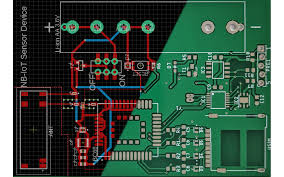Definition— PCB milling is the process of removingpaths and copper pads from a blank circuit board it is a subtractive technique used in PCB fabrication. Milling - while chemicals are used to recirculate the plasma and float the axon - patterns the desired pattern by mechanical etching, not the more common method of chemical etching that simply eats unnecessary copper dead. In terms of accuracy, versatility, and environmental considerations, this approach has unique features. In this detailed writeup I take a deep dive into PCB milling, and how PCB milling process is an important step of PCB fabrication.
Rapid, Precise and downtime Reduction in Prototyping
Precision Circuit Patterns: PCB milling is very accurate, and can create even very fine lines. Milling machines can be accurate up to 0.001 inches, down to the fraction of a millimeter, which is a process based on incredibly detailed circuit patterns that are crucial for contemporary electronics.
Versitility: Milling is also a versatile approach, which is one of the main advantages of this technique. Since no new mask or very long chemical etching process to change the PCB design is used, changes can be implemented quickly in the design. This is especially important during the prototyping phase where the design is continually changed based on test results.
Enhanced Speed in Production
Short Turnaround Times: Milling machines can produce a PCB within a few hours, which is great for rapid prototyping and immediate work. Such speed is important in industries where the time to market can be a critical competitive advantage.
Personalized or On Demand Manufacturing - PCB milling can also be used to produce single boards on demand. This capability is very handy for custom jobs or small production runs where the beginning and end of the run costs of chemical etching would also be cost prohibitive.

Advantages in terms of Environments and Safety
Less Chemicals: Milling is essentially a completely physical process, as opposed to chemical etching, and as such very little in the way of noxious chemicals needs to be exhausted to the outside air or poured down the drain in conjunction with our process. The LCT represents a significant development for workers, as these machines cut the risk of chemical exposure and have no waste to dispose of, fitting with greener manufacturing.
No Etchant Disposal: Chemical etching creates a waste stream that needs to be processed and disposed of in an environmentally responsible manner. This is where milling saves the day for a cleaner alternative that helps manufacturers minimize their impact on the environment.
Improved Cost Efficiency
Less Expensive Upfront: Machining does not subject you to expensive masks or heavy set-up. The helps keeping the costs down at the beginning of the production mainly for prototypes and small volumes.
Material Savings: Milling is accurate enough to considerably reduce wastage, making optimal use of the copper-clad substrate. I always shoot for the 99-99. it guarantees the most efficient use of the raw materials available and some cost savings over time.
Versatility in Material Use
Their large material versatility: PCB milling machines will cut all kinds of substrates from your run-of-the-mill FR4 to the more exotic material employed in high-frequency applications. This adaptability makes it a useful selection for various jobs.
To conclude, PCB milling is an accurate, versatile and eco- friendly fabrication process that is necessary for any modern day PCB manufacture. Combining flexibility and speed to achieve the rapid iteration demanded by the fast paced electronic markets. If you are interested in deeper knowledge about how PCB milling can improve your fabrication flow please turn tothis PCB milling details. Since knowledge is power, a thorough understanding of what a PCB is and what it can do will only help your production processes and product quality in the long run.